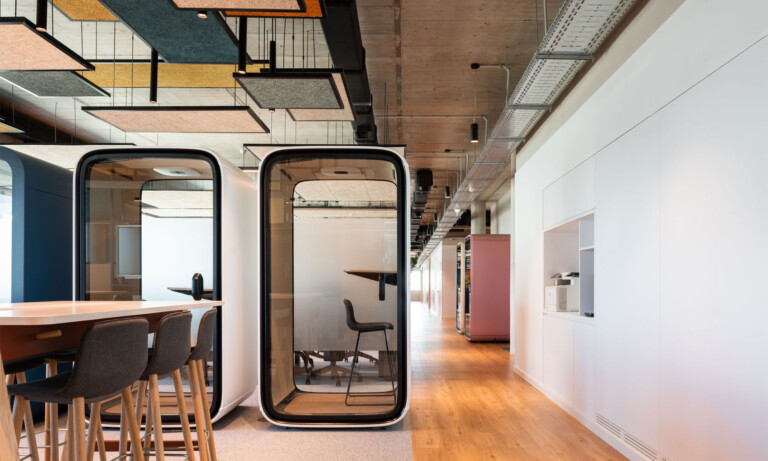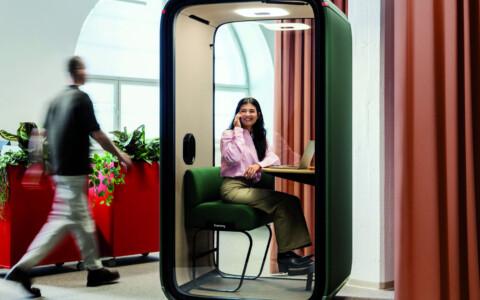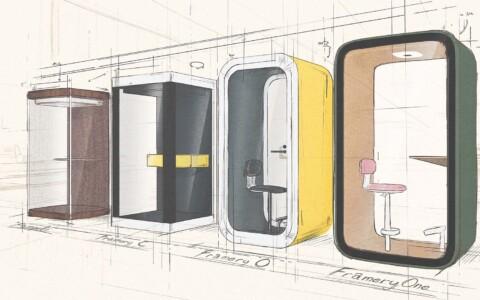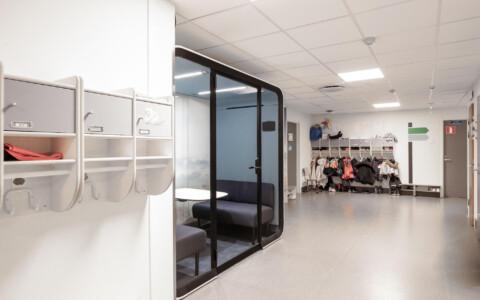A recent study found that office pods are more cost-effective than constructing new meeting rooms. This has huge implications for the massive amount of underprepared office spaces across the USA – and could save the industry over 30 billion dollars between now and 2030.
For the second time since 2019, Framery has teamed up with commercial real estate services firm, CBRE Finland, and compared the total costs of one, four and six-person Framery soundproof office pods to the cost of meeting rooms of equal size in Europe, North America and Asia. And, for the second time, the report reveals interesting insights that provide office tenants and managers with the tools necessary to make informed decisions about the design and layout of their space.
Offices around the world are learning that they are improperly equipped for the needs of a modern workforce. Meetings are shrinking, and 90% of meetings feature at least one virtual participant. Modern offices are in need of quiet spaces to join calls and host smaller meetings. But properly equipped meeting rooms are in limited supply – especially in the open-plan office spaces that gained popularity in the decades preceding the pandemic. Now companies face a critical investment decision: more walls or pods?
| Phone Room/Pod | Small Room/Pod | Medium Room/Pod | |
| London | +97% | +25% | +2% |
| Frankfurt | +79% | +10% | -5% |
| Tokyo | +92% | +28% | +18% |
| Singapore | +60% | -2% | -21% |
| New York | +155% | +63% | +38% |
| San Francisco | +107% | +45% | +27% |
Around the globe, offices are scrambling to keep up with the increased demand for private spaces, as companies are being forced to compete with the perks and amenities provided from the home office. “Office occupiers are investing more and more into flexible spaces and different types of adjustable spaces to meet the demand of flexibility and to attract their workforce back to the office after the pandemic years’ remote working,” says CBRE’s Jussi Niemistö.
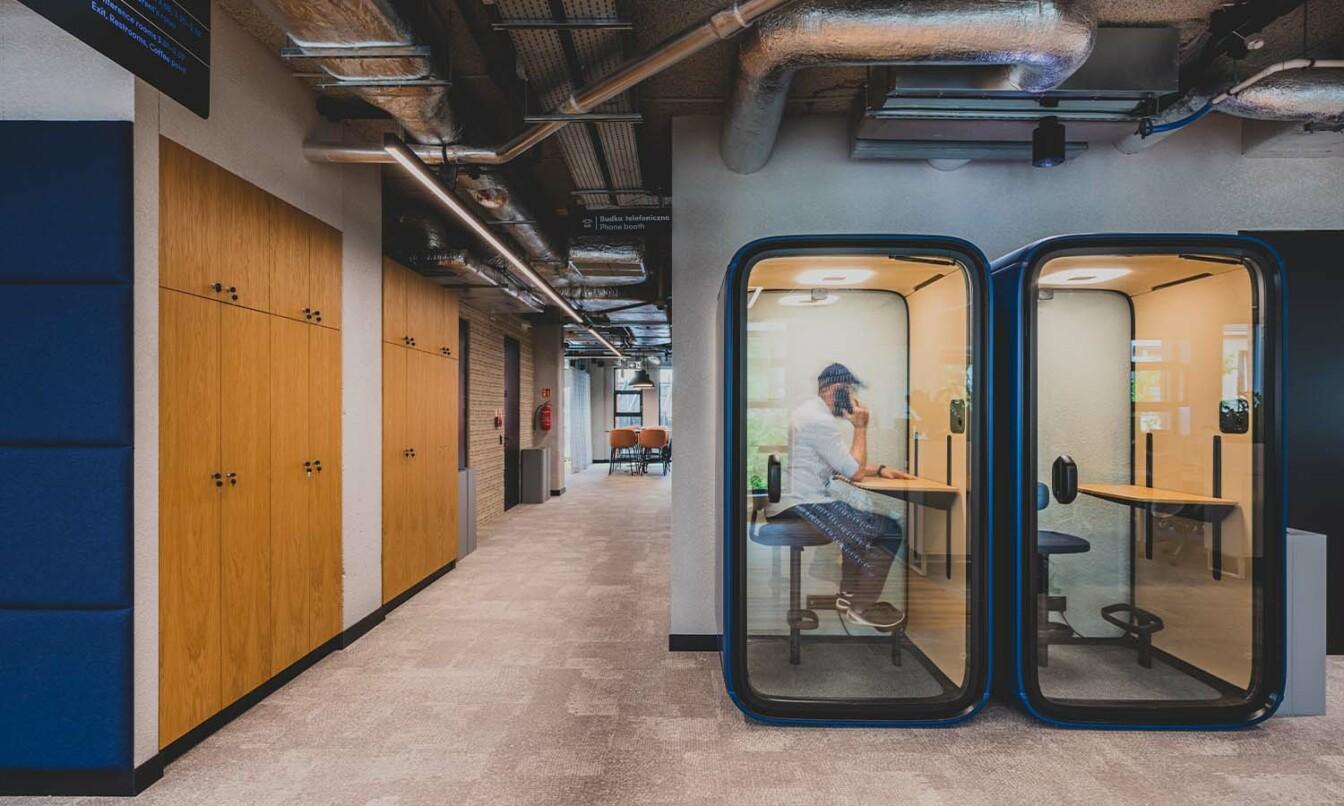
And updating office spaces is a costly endeavor. According to the Cushman & Wakefield study, over 41% of the office field needs to be refurbished in the US alone. That’s 2.6 billion square feet of vacant and inadequate office space that “hasn’t kept pace with demands to support hybrid working and efficiency priorities.”
The cost of building new meeting rooms in that amount of space would surpass $85 Billion.
The same Cushman & Wakefield study also sets the new average number of square feet per office employee 165 sf/person, down from 190 sf/person pre-pandemic. This means you would have 15,700,000 employees using that space. Already pre-pandemic, typical recommended numbers of meeting rooms for open-plan offices were 1 phone room for every 15 employees, one small meeting room for every 20 employees, and one mid-sized meeting room for every 20 employees.
| ROOM TYPE | DISTRIBUTION / EMPLOYEES | REQUIRED ACROSS THE US |
| Phone Room | 1 for every 15 Employees | 1,046,465 |
| Small Meeting Room | 1 for every 20 Employees | 784,848 |
| Mid-Size Huddle Room | 1 for every 20 Employees | 784,848 |
Using calculations based on the 2023 CBRE cost study, the cost of building meeting rooms in the insufficient US office spaces would be 85.8 billion dollars. Pods provide an opportunity to reduce that cost significantly – the cost of constructed meeting rooms is 55 % higher on average than that of Framery pods. The same amount of private space can be supplied by Framery for roughly 55.5 billion dollars – saving real estate owners and occupiers 30.3 billion dollars throughout the end of the decade.

| 1-Person Phone Rooms | 2-4 Person Meeting Rooms | 4+ Person Huddle Rooms | TOTAL | |
| Cost of Constructed Rooms | $25.7 Billion | $25.5 Billion | $34.6 Billion | $85.8 Billion |
| Cost of Framery Pods | $11.3 Billion | $17.1 Billion | $27.1 Billion | $55.5 Billion |
| Savings w/ Framery Pods | $14.4 Billion | $8.4 Billion | $7.5 Billion | $30.3 Billion |
Office pods are a modular, cost-effective, and more sustainable solution for companies than constructing new meeting rooms. And these are just some of the many benefits office pods can provide, according to Framery CEO Samu Hällfors. “As a culture, we are shifting to a more flexible way of working. That is where office pods come in,” says Hällfors. “Pods are compact and make better use of existing space. They allow for greater flexibility in rearranging and reconfiguring offices. And they can be moved to a new location when needed. That all greatly reduces the lifetime costs associated with running an office, especially in larger cities with high-priced real estate.”
But soundproof pods also benefit the employees – as well as the employer. And employees are beginning to expect this type of office perk from their employer. “One of the most in-demand building offerings is phone booths and private suites, where workers can take phone calls or remote meetings alone or in small groups,” states CBRE’s Niemistö.
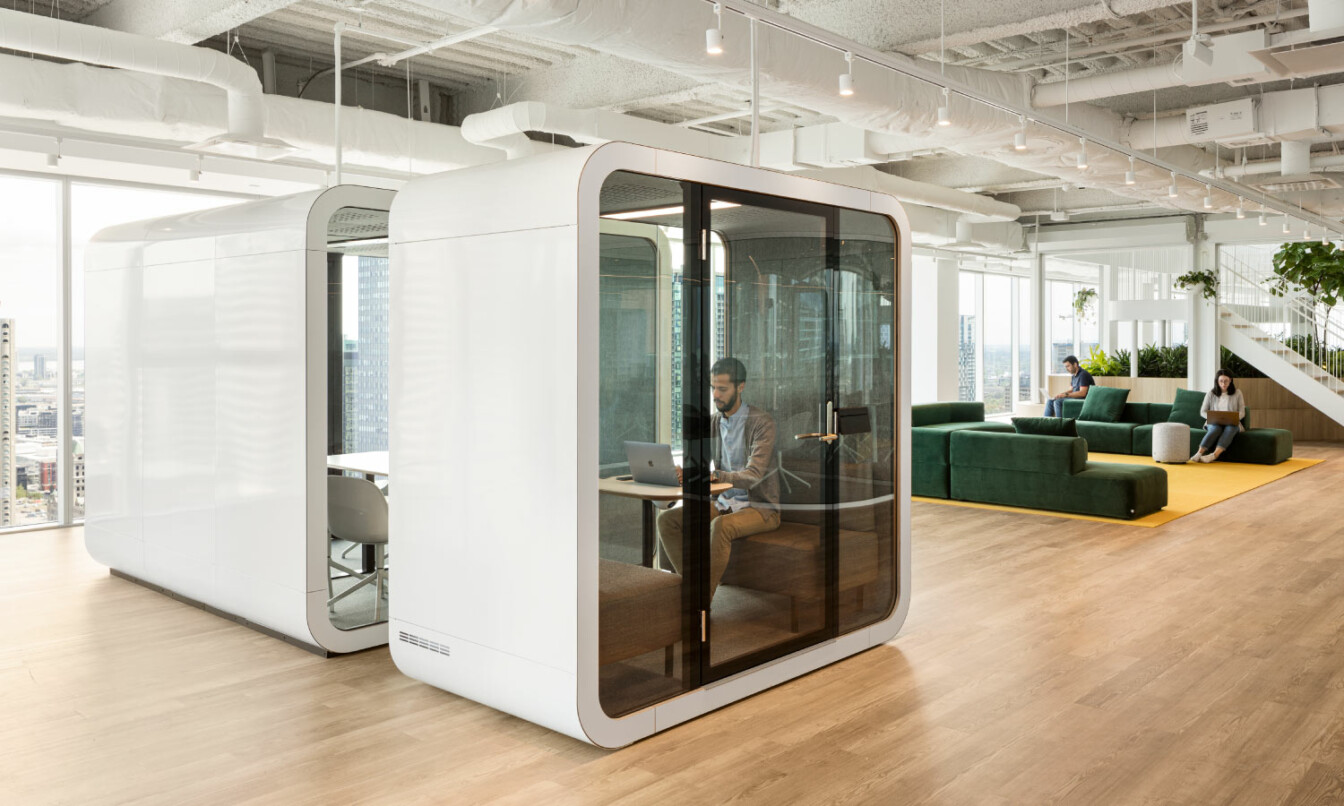
“Today’s office requirements and tenant needs frequently show an increase in enclosed private space and more modular space structures. This means focus workspaces for better concentration, but also rooms or phone booths, such as Framery’s, for private calls or smaller group meetings that help in creating an office environment that is most effective for the workforce.”
Framery invented, manufactured, and sold the world’s first office pod, and its Framery O model is now the world’s best-selling pod. The majority of Forbes top 100 companies use Framery pods, including Microsoft, L’Oreal, and Nvidia. That adoption rate will only intensify in the next year or two, says Hällfors. “In 2013, the global market for pods was roughly 1,000 units. Now it is tens of thousands of pods. We’ve seen over 200 manufacturers pop up globally since we created the market in 2010.”
CBRE’s global research report indicates that access to focus space like pods is now the most desired office perk, ranking higher in employee preferences than a private office. “The increasing demand for these office pods isn’t coming so much from management as it is from employees themselves”, says Hällfors. “Reimagining the workplace in these innovative, cost-effective ways is what is going to get employees excited to return to the office.”

